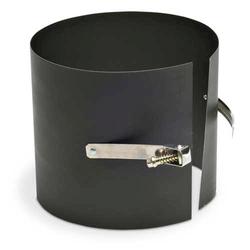I just installed a double wall stove pipe and where there are small gaps at the joints I can feel cold air leaking (quite strongly) on my fingers. Do I need to somehow seal these joints or is there a way to prevent cold air from coming down this stove pipe.
I have an unfinished attic above this space, which is the origin of the cold air, still surprised how much is coming through out of this pipe...
![[Hearth.com] Cold air leaking from double wall stove pipe joints [Hearth.com] Cold air leaking from double wall stove pipe joints](https://www.hearth.com/talk/attachments/pxl_20231123_014024572-webp.319283/)
I have an unfinished attic above this space, which is the origin of the cold air, still surprised how much is coming through out of this pipe...


